Editing equirectangular panoramic images can be challenging, especially near the zenit (top) and nadir (bottom) due to the heavy distortion in those areas. A practical solution is to convert the equirectangular image into cube faces, which represent the six sides of a cube (front, back, left, right, top, bottom). This format allows for easier and more precise editing. Once the modifications are complete, the cube faces can be reassembled into a seamless equirectangular panorama.
🖼️ Convert ➝ 🧊 Cube Faces ➝ 🖼️ Edit ➝ 🔄 Reassemble ➝ ✅ Done

This guide outlines the complete process using PTGui:
🧊 Step 1: Load the Equirectangular Image into PTGui and convert to Cube Faces
- Open PTGui.
- In the "Extras" menu, select the option to convert to cube faces.
- Add the equirectangular image, set the Jpeg-Quality to 95 if you are using Jpeg, and click "Convert"
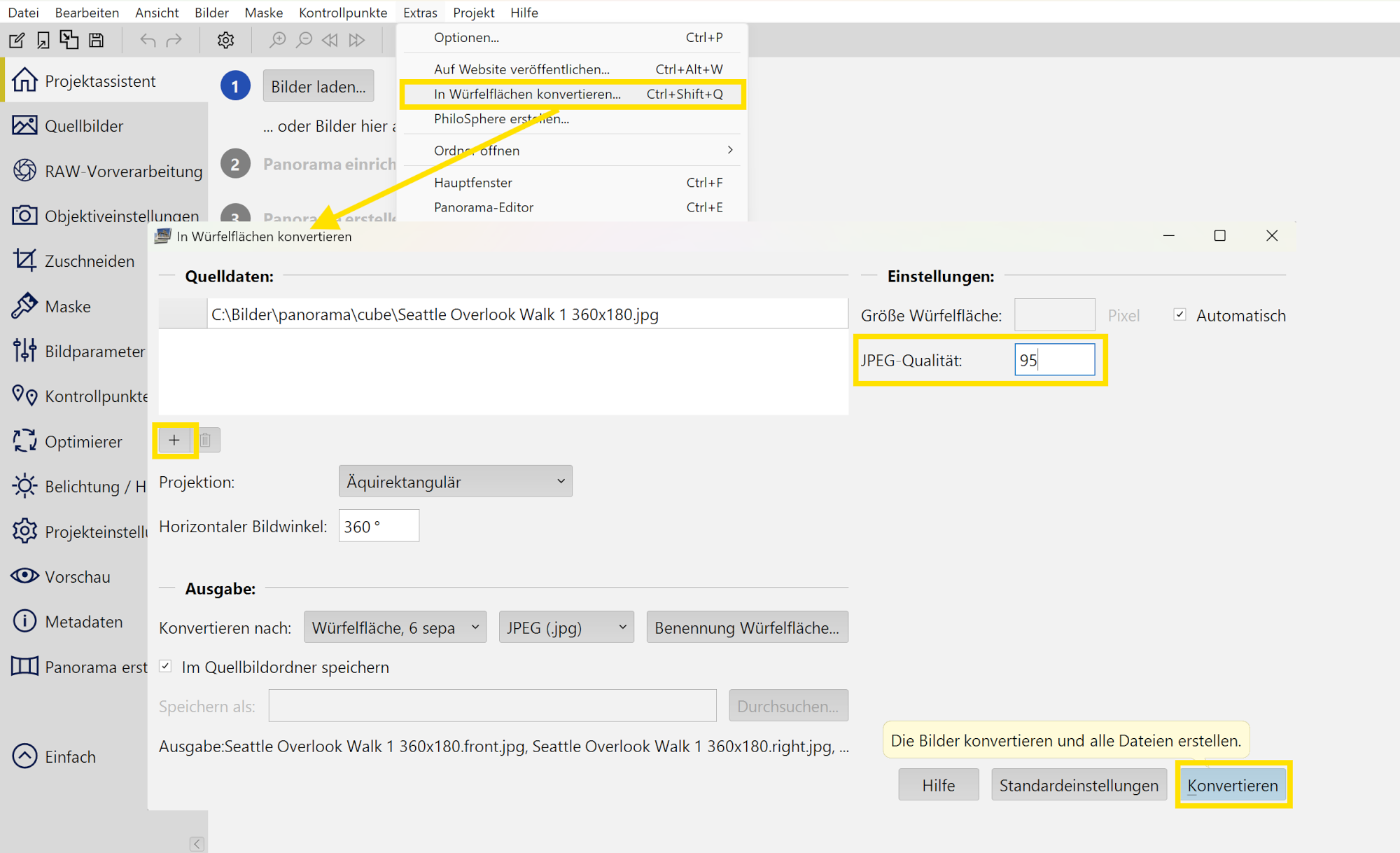
🖼️ Step 2: Edit the Cube Faces
Open the six undistorted cube face images in your preferred image editor and apply the necessary edits to the relevant face(s), such as removing a tripod from the nadir or retouching the sky in the zenit.
Save the edited images with the same filenames.
🔄 Step 3: Reassemble the Cube Faces into an Equirectangular Image
- Open PTGui.
- Load the six edited cube face images. You can simply drag and drop the cube face images from the explorer.
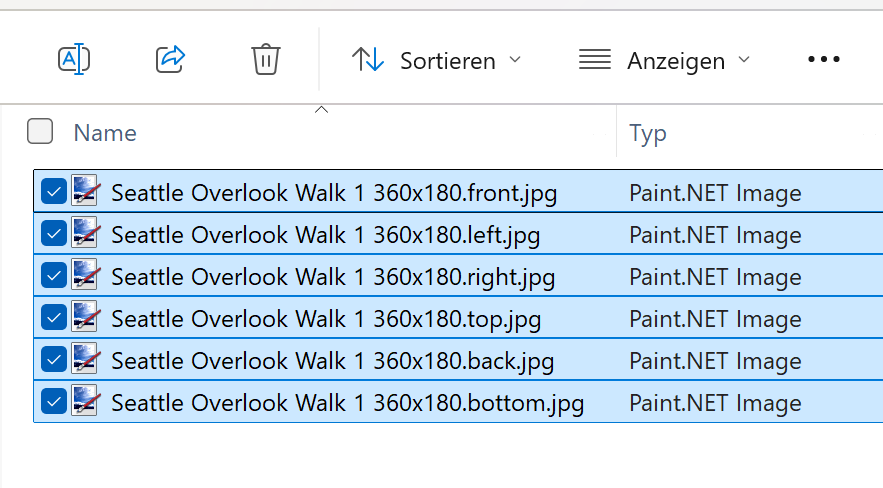
The images are automatically aligned for equirectangular output in the PTGui editor:
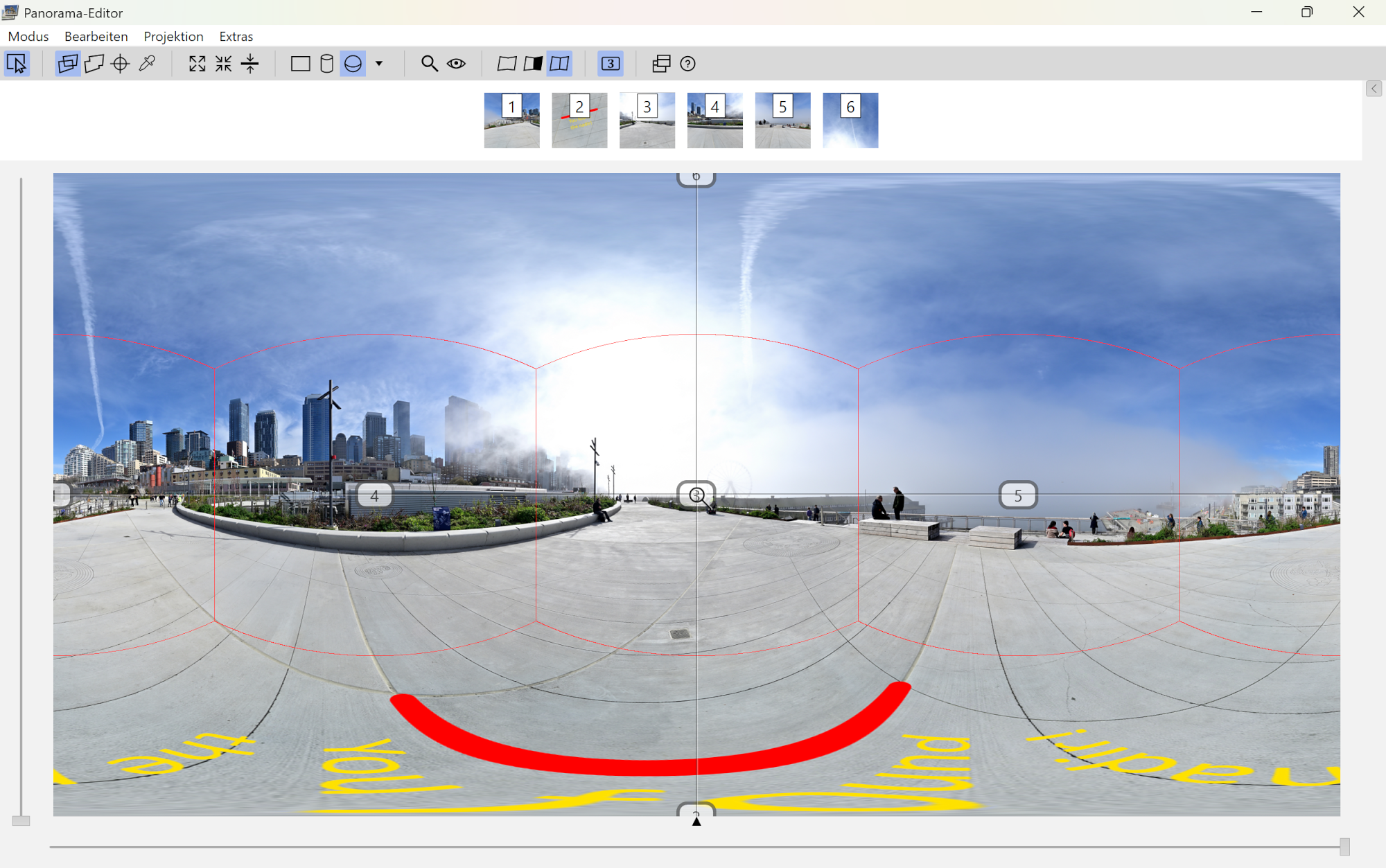
3. Go to the "Create Panorama" tab.
4. Choose your desired output resolution and click "Create Panorama".
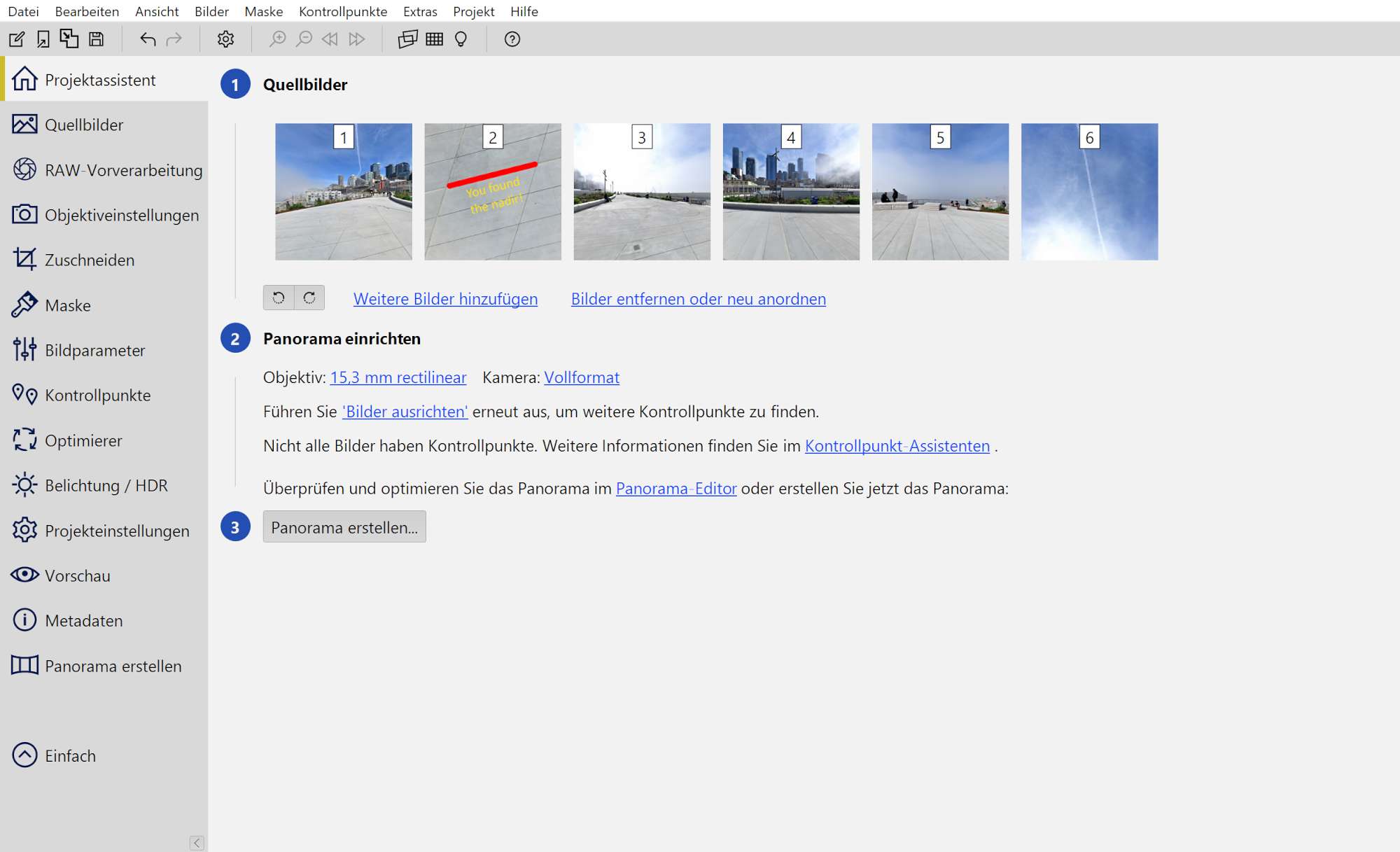
Converting an equirectangular panorama into cube faces provides precise control over editing problematic areas like the nadir and zenit. PTGui simplifies this workflow, enabling seamless transitions between projections and accurate reassembly of the final panorama. This method is particularly effective for high-quality virtual tours, 360° photography, and professional post-processing tasks.
Thinking a step further, what you really need is the 15,3mm lens reported by PTGui:
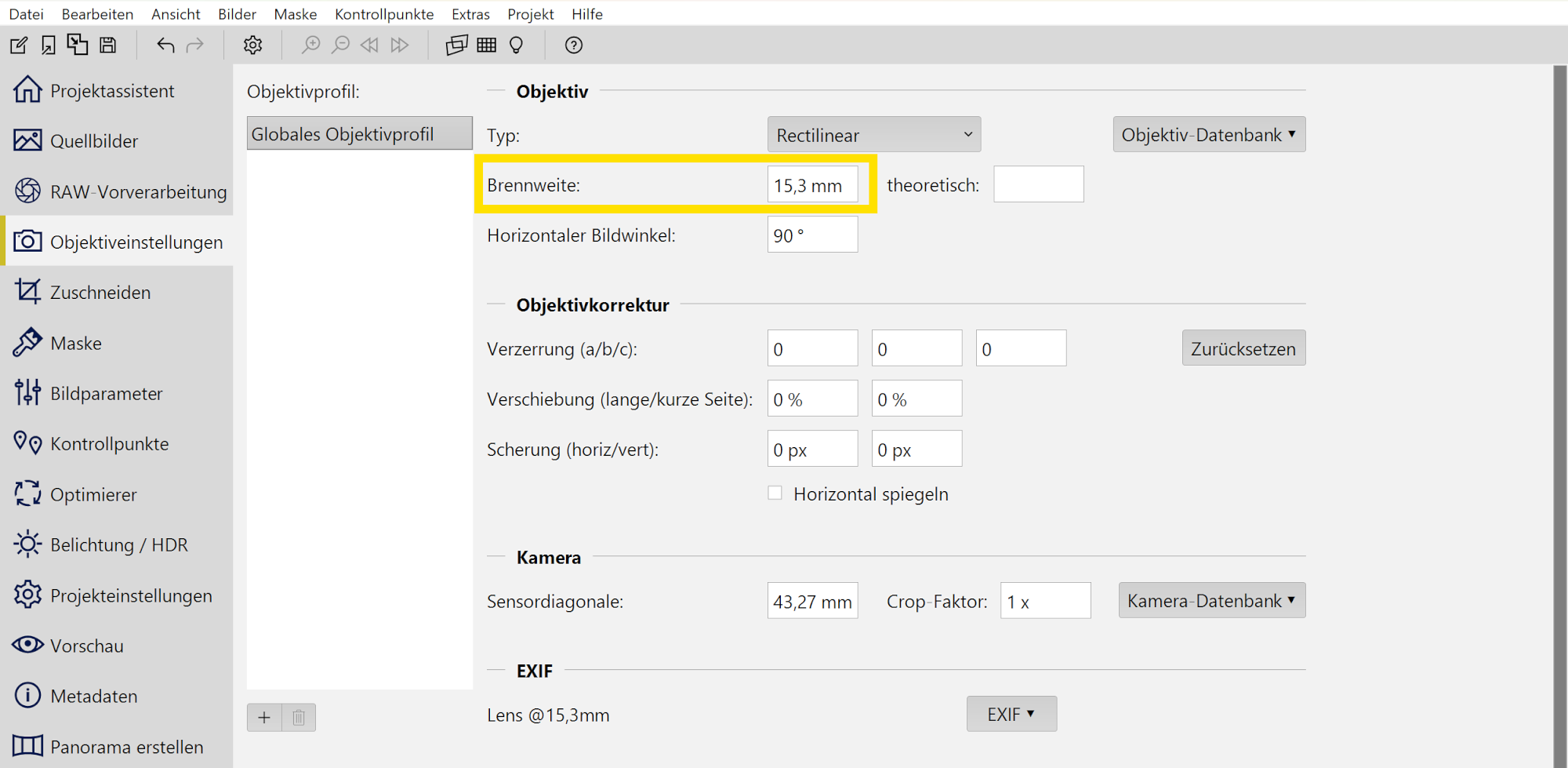
Expect cheap Chinese clones to hit the market soon.
🔗 Reportedly, this lens can focus from 0,2m to 1AU (astronomical unit), so you can have the sun perfectly in focus.
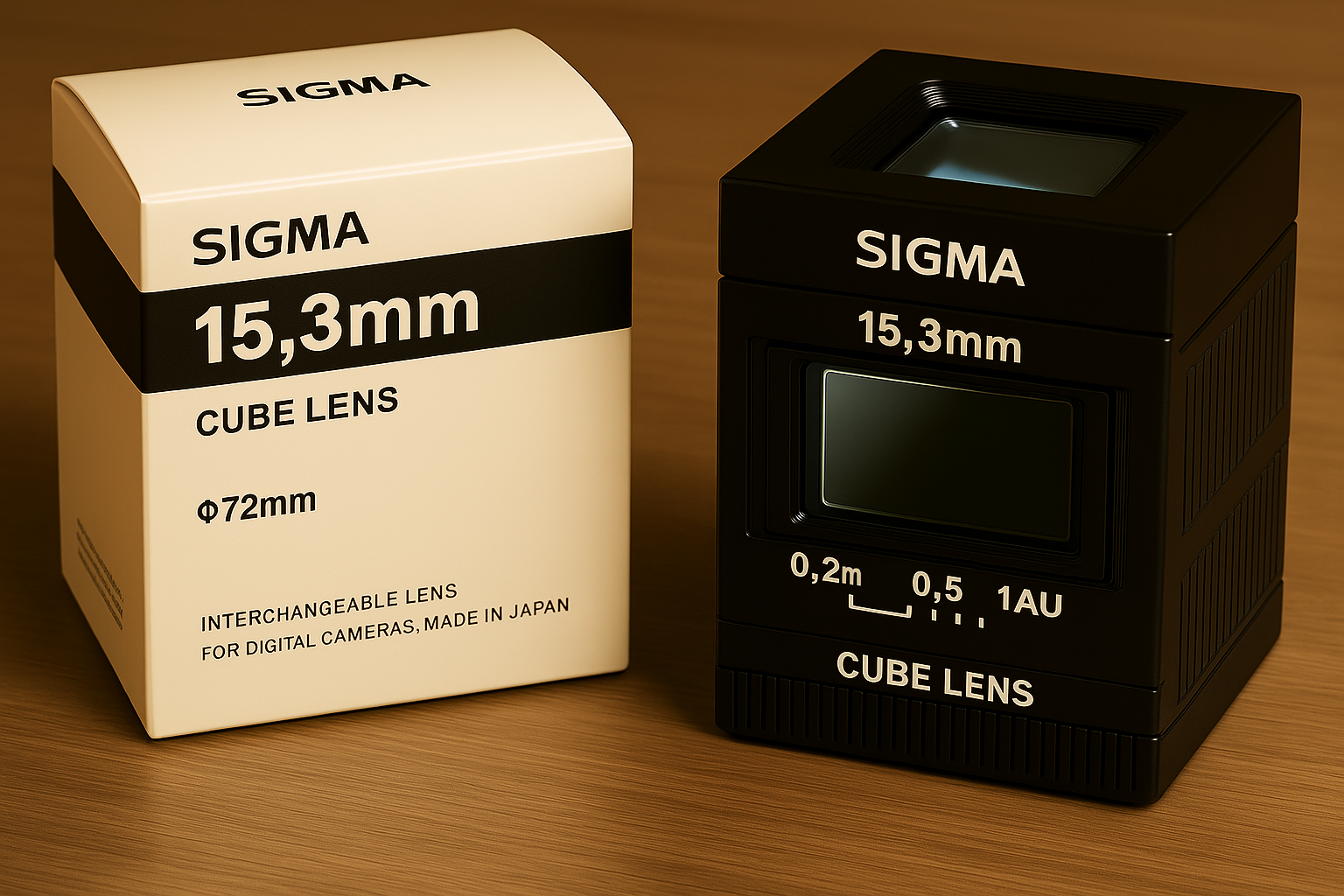
Because sometimes, the best way to solve a problem … is to avoid it entirely in the first place. The 15,3mm cube face lens captures the world in exactly 90° intervals. Just six clean shots stitched with pixel-perfect seamlines, and leave the fisheye theatrics at the door.